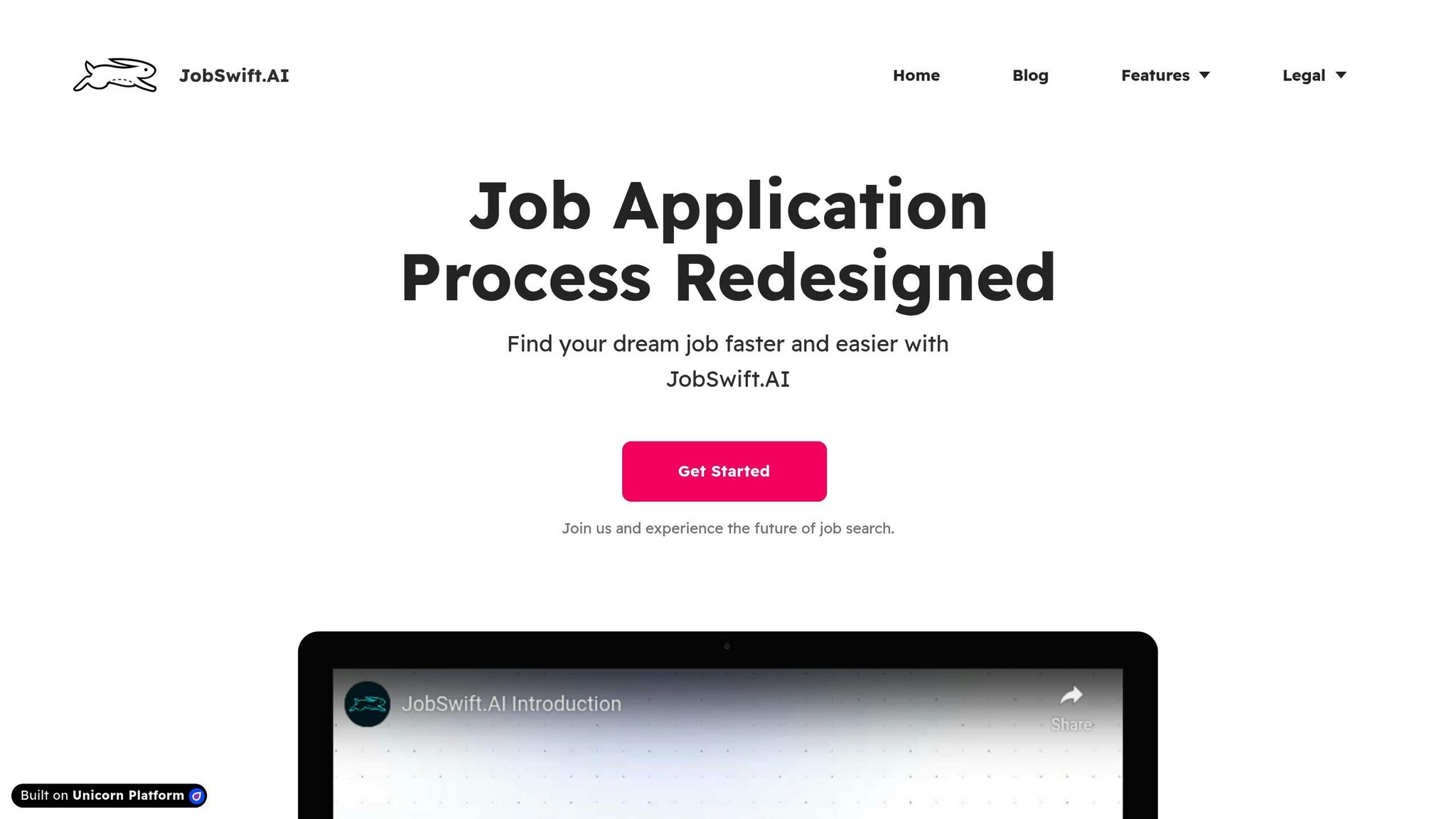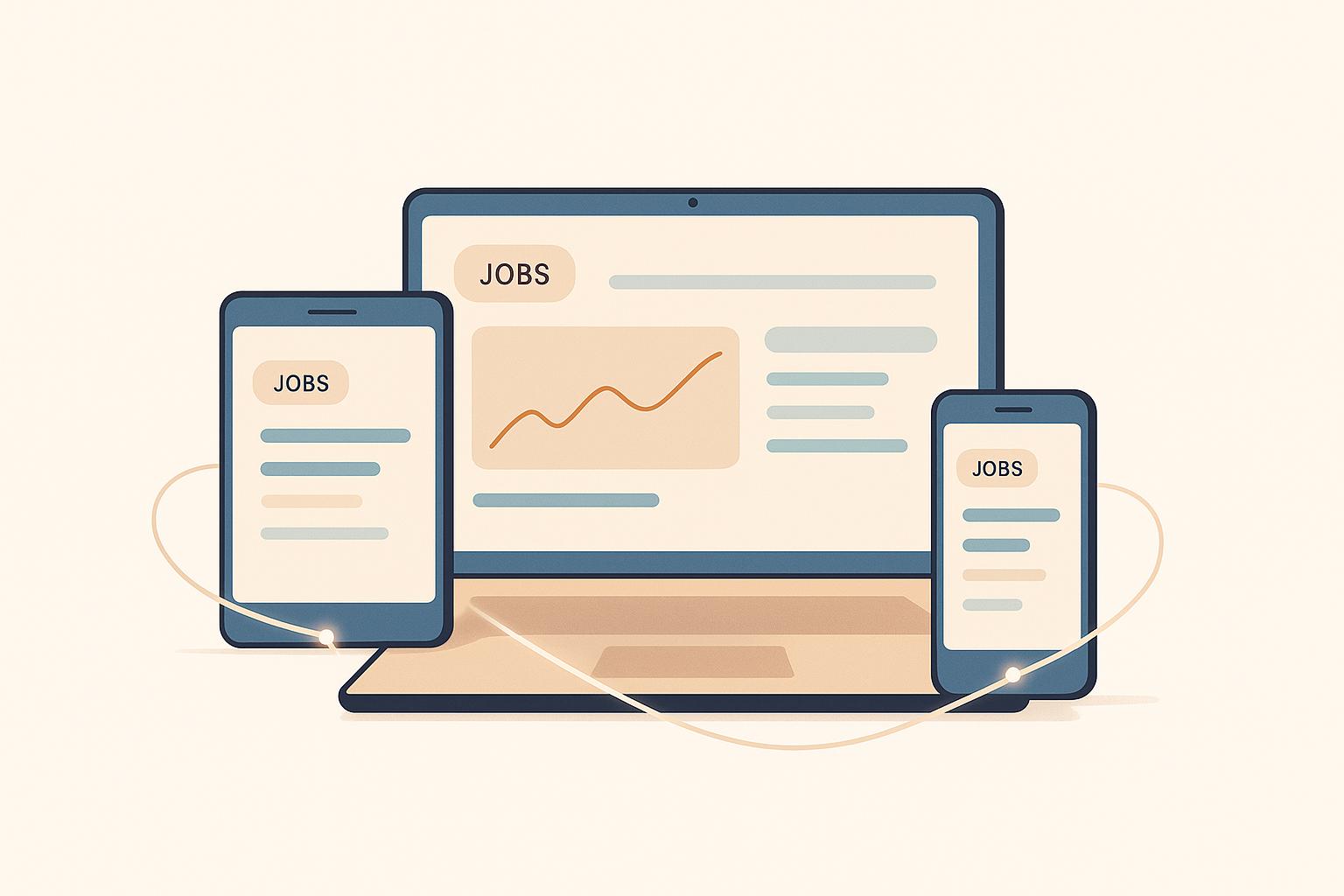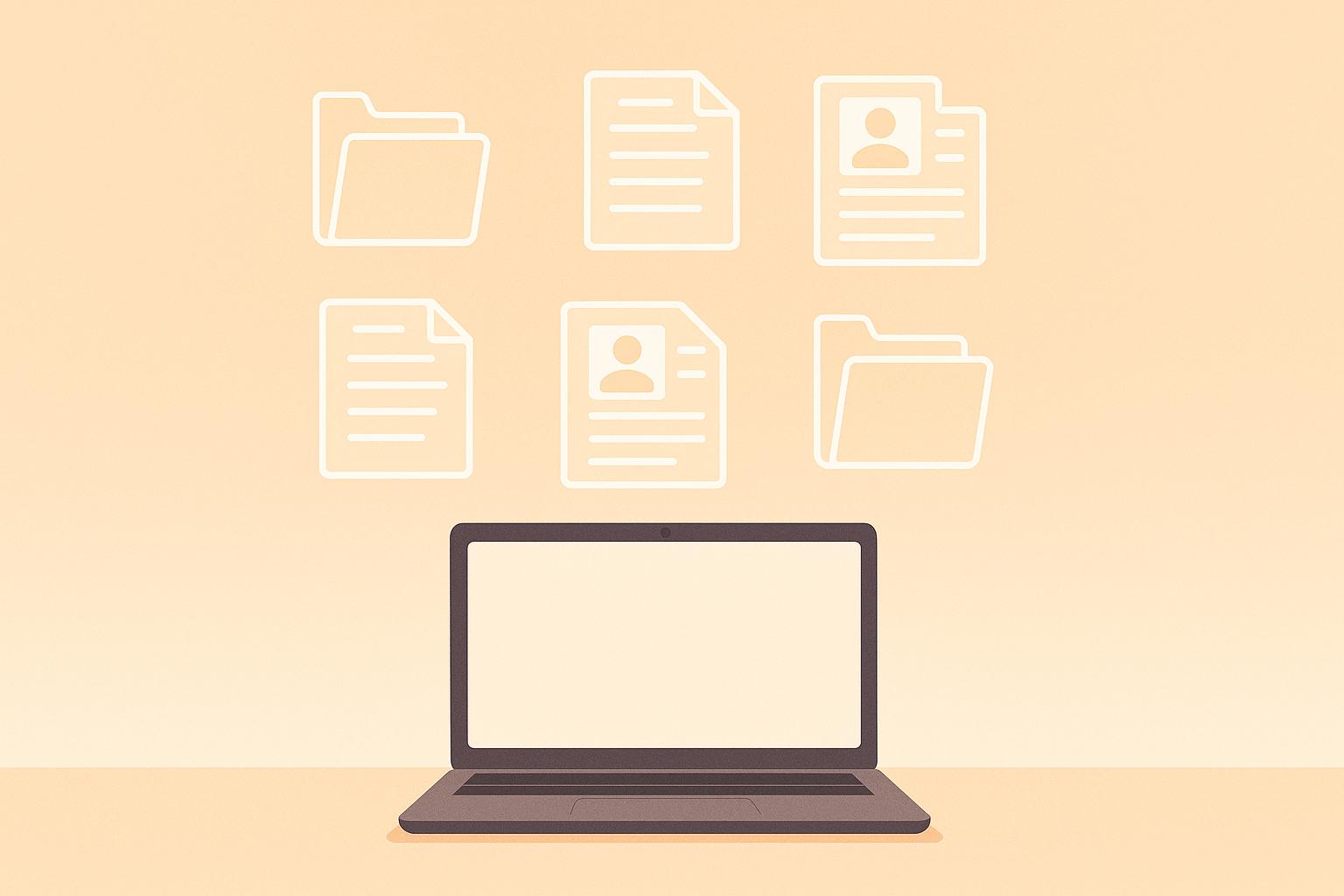The job market is evolving fast. Employers now value practical skills and experience over traditional qualifications. To stay competitive, you need to:
- Track in-demand skills: Analyze job postings, industry reports, and tools like JobSwift.AI to spot trends.
- Review your skills: List your technical, soft, and certified skills. Match them to job requirements and identify gaps.
- Create a learning plan: Use SMART goals to improve skills with online courses, workshops, or mentorships.
- Leverage AI tools: Platforms like JobSwift.AI help optimize resumes, track applications, and match skills to job needs.
Finding High-Demand Skills
Reading Job Posts Effectively
Job posts are treasure troves of information when it comes to identifying key skills. Pay close attention to the "Requirements" and "Qualifications" sections. Separate "required" skills from "preferred" ones, and look for recurring terms or phrases that highlight what employers value most. This process helps you zero in on the core competencies needed in your field.
To keep things organized, use a spreadsheet to log these recurring skills. Include details like specific tools, software versions, and certifications that show up repeatedly. This will help you track patterns and prioritize your learning efforts.
Using Market Research Data
Industry reports and labor market analyses can shed light on current skill trends. Some excellent resources include:
| Data Source | Update Frequency | Type of Information |
|---|---|---|
| Bureau of Labor Statistics | Monthly | Employment trends, job growth projections |
| LinkedIn Workforce Report | Quarterly | Skills gaps, hiring trends by industry |
| Industry Association Reports | Annually | Sector-specific skill requirements |
| Company Earnings Calls | Quarterly | Strategic priorities, technology investments |
Focus on reports tailored to your industry. These often highlight new technologies, methodologies, or certifications that employers are prioritizing. Combining these insights with AI tools can give you a clearer picture of where to focus your efforts.
AI Tools for Skills Analysis
AI tools can simplify the process of identifying in-demand skills. Platforms like JobSwift.AI can analyze job postings and highlight the skills employers value most. For example, its AI CV optimization tool can match your resume to job requirements, making it easier to spot gaps in your skillset.
"JobSwift.AI has made my job search so much easier. I highly recommend it!" - Isaiah Summers
The platform also includes an application tracking system to help you understand which skills improve your chances of passing ATS screenings. Advanced features, available through the Pro plan ($39.99/month or $249.99/year), provide deeper insights into market trends.
"The one click application feature is a game changer. I love JobSwift.AI!" - Crystal O'Connor
When using AI tools, focus on:
- Pinpointing gaps between your current skills and job requirements
- Identifying which skill combinations are most sought after
- Monitoring how skill demands shift over time in your target roles
These tools can save you time and give you a competitive edge in your job search.
Review Your Current Skills
List Your Skills
Start by organizing your skills into three main categories:
| Skill Category | Examples | Details to Include |
|---|---|---|
| Technical Skills | Programming languages, software tools, data analysis | Specify versions and your proficiency level |
| Soft Skills | Leadership, communication, problem-solving | Provide examples of how you’ve used these skills |
| Certifications | Professional credentials, completed training programs | Note expiration dates and renewal requirements |
When documenting your skills, be as specific as possible. For instance, instead of saying "Python programming", write something like, "Proficient in Python 3.x with 5 years of experience in data analysis and web development." This level of detail makes your expertise clear and actionable.
Once your skills are listed, compare them to the qualifications and requirements of the roles you're targeting.
Match Skills to Job Requirements
Leverage tools like JobSwift.AI to evaluate how your skills align with current job market demands. This comparison helps you identify where your experience meets expectations and highlights any outdated skills that may need updating.
Find Skill Gaps
Pinpointing your skill gaps is crucial for growth. Analyze your abilities in three key areas:
- Current Role Requirements: Compare your skills to what’s expected in your current position.
- Target Role Requirements: Look at the qualifications needed for your desired role.
- Industry Trends: Stay informed about new technologies and methods shaping your field.
JobSwift.AI’s dashboard can provide insights into which skill gaps might be slowing down your career progress, such as fewer interview callbacks.
Here’s an example of how to approach skill gap analysis:
| Skill | Current Level | Required Level | Action Plan |
|---|---|---|---|
| Technical | Intermediate Python | Advanced Python & Machine Learning | Enroll in advanced courses |
| Leadership | Team member | Team lead | Take on project leadership roles |
| Industry Knowledge | Basic | Expert | Join industry groups or attend workshops |
This structured approach will help you focus on the areas that need improvement while keeping an eye on future opportunities.
Create Your Skills Update Plan
Set Learning Goals
Turn your skill gaps into SMART goals - Specific, Measurable, Achievable, Relevant, and Time-bound. Here's an example of how to structure them:
| Goal Component | Example | Timeframe |
|---|---|---|
| Technical Skill | Learn the Python Django framework for web development | 3 months |
| Industry Knowledge | Earn the AWS Cloud Practitioner certification | 6 weeks |
| Soft Skill | Lead three team projects to develop leadership skills | 4 months |
Use tools like JobSwift.AI's dashboard to track your job search progress and stay on top of your learning goals. Once your goals are clear, focus on finding the right training resources to help you achieve them.
Pick Training Resources
Choose training platforms that suit your learning style and schedule. Keep these formats in mind:
| Learning Format | Best For | Time Investment |
|---|---|---|
| Online Courses | Self-paced technical skills | 5–10 hours/week |
| Industry Workshops | Hands-on practice | 2–4 hours/session |
| Mentorship Programs | Developing soft skills | 1–2 hours/week |
Make sure your selected resources align with industry standards. Use JobSwift.AI's employer insights to identify certifications and training programs valued in your desired roles. Once you've chosen your resources, track your progress regularly to ensure you're on the right path.
Measure Learning Progress
Keep tabs on your progress with a structured approach:
-
Set Milestone Checkpoints
Track progress through tangible outcomes, like completing a project or passing an exam. -
Monitor Key Metrics
Pay attention to indicators such as:- Number of completed projects
- Certification exam results
- Feedback from mentors or team leads
- Success rates in interviews
-
Adjust Your Strategy
Evaluate your progress every two weeks. Use JobSwift.AI's CV tracking features to measure how your learning impacts job application outcomes.
Here's an example of how to track progress:
| Skill | Progress Indicator | Target Date | Status |
|---|---|---|---|
| Technical | Project completion | Monthly | On track |
| Certification | Practice test scores | Bi-weekly | Needs focus |
| Leadership | Team feedback ratings | Quarterly | Exceeding |
As you hit milestones, update your CV to showcase your growing expertise and skills.
sbb-itb-96bfd48
Related video from YouTube
Use AI Tools for Job Applications
Navigating today’s job market can be challenging, but smart tools can simplify the process. They help you organize applications, match your skills to job requirements, and avoid common pitfalls.
JobSwift.AI Features Guide

JobSwift.AI makes job hunting easier by offering a suite of tools like an application dashboard, automatic tracking, scam detection, and resume optimization powered by AI.
| Feature | What It Does | Why It’s Useful |
|---|---|---|
| Application Dashboard | Organizes your job applications | Keep everything in one place |
| Auto-tracking | Tracks application progress | Stay updated without manual effort |
| Job Scam Protection | Flags suspicious listings | Avoid wasting time on fake opportunities |
| CV Optimization | Analyzes resumes with AI | Boosts compatibility with ATS software |
"The one click application feature is a game changer. I love JobSwift.AI!" - Crystal O'Connor
Here’s how to get started with JobSwift.AI:
- Import your resume into the platform.
- Add the Chrome or Firefox browser extension.
- Apply for jobs directly through the platform.
- Use the dashboard to monitor your progress and metrics.
A key step in standing out is ensuring your resume is tailored for both Applicant Tracking Systems (ATS) and recruiters.
ATS-Ready Resumes
To make sure your resume performs well with ATS and appeals to hiring managers, follow these tips:
| Resume Element | For ATS | For Recruiters |
|---|---|---|
| File Format | Save as .docx or .pdf | Keep formatting clean |
| Keywords | Match the job description | Write naturally, not robotic |
| Headers | Use standard section titles | Ensure clear organization |
| Fonts | Stick to simple fonts (Arial) | Maintain a polished look |
JobSwift.AI's resume optimization tool evaluates your CV against specific job postings, helping you strike the right balance between ATS compatibility and readability.
Once your resume is ready, use AI to find jobs that align with your skills and goals.
AI Job Matching
JobSwift.AI’s Pro plan ($39.99/month or $249.99/year) offers advanced matching features to supercharge your job search:
| Feature | What It Does | How It Helps |
|---|---|---|
| Skills Analysis | Compares your skills to job needs | Pinpoints roles that fit you best |
| Application Limits | Allows up to 300 applications/month | Expand your opportunities |
| Employer Insights | Provides company analysis with AI | Make informed career choices |
Keep your profile updated and regularly check AI-generated matches. While the free plan allows one application per day, upgrading to Pro significantly broadens your options.
With tools like these, you can save time, avoid scams, and stay ahead in a competitive job market.
Conclusion: Keep Your Skills Current
Staying competitive in today's job market means actively developing your skills and approaching your job search with a clear strategy.
Key Takeaways
Effective skills tracking requires a structured plan. Here’s what successful job seekers prioritize:
| Focus Area | Action Items | Expected Outcome |
|---|---|---|
| Skills Analysis | Research job market trends | Understand which skills are in demand |
| Learning Strategy | Create a training schedule | Build skills relevant to your goals |
| Technology Integration | Use AI tools effectively | Simplify and improve your job search |
| Application Process | Optimize for ATS systems | Increase your chances of a callback |
These areas form a roadmap for aligning your skills with market needs.
Steps to Get Started
Here’s how to begin updating your skills:
- Assess and Plan: Compare your current skills with market demands. For example, if you're aiming for a data analyst role, consider dedicating 3–4 hours weekly to learning SQL or other relevant tools.
- Use Technology Wisely: Tools like JobSwift.AI can help you track job applications and ensure your skills align with employer expectations.


